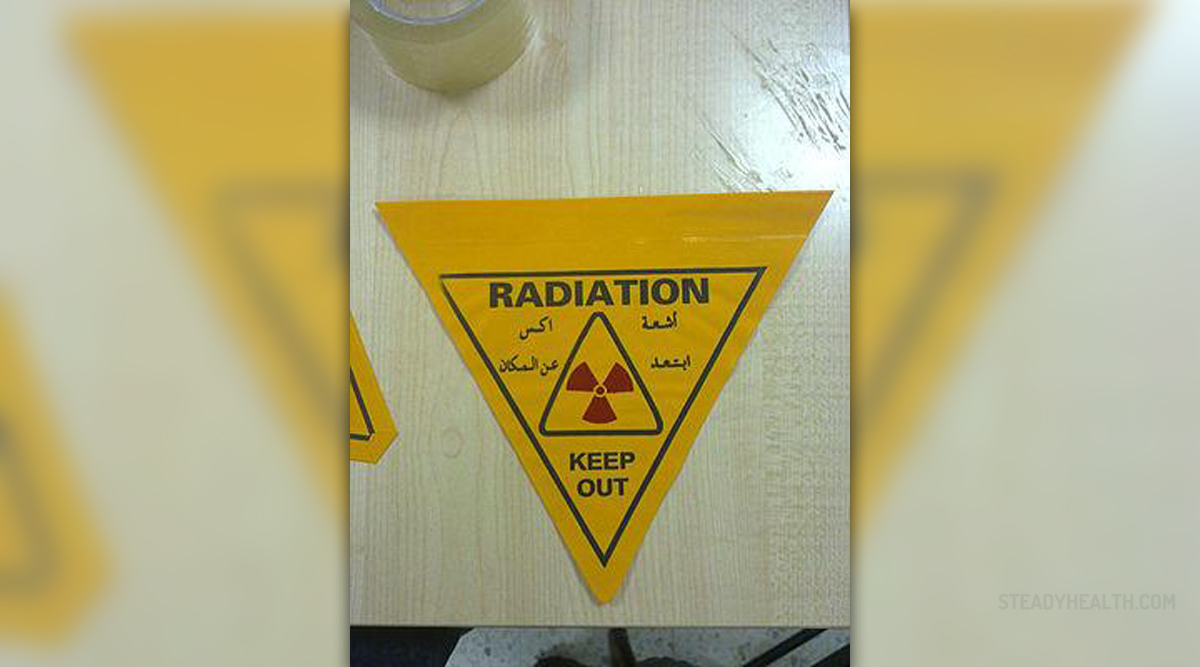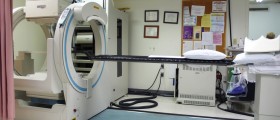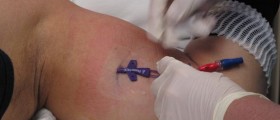
Due to the resources we use and the technological breakthroughs we are exposed to, an average US citizen receives about 360mrem annually, in addition to the nuclear power radiation which those who work in such environments receive as well.
Our body has a specific tolerance of radiation, being the amount of radiation we can get exposed to. Anything above this is bound to trigger serious health problems. Taking into consideration that we get exposed to different types of radiation on a daily basis, it is crucial to known everything about this and do your best to avoid excessive exposure.
How Much Radiation Can We Get?
The main effect of radiation is ionization of the cells within our body. This process signifies the removal of the electrons from the atoms, resulting in the formation of ions which interact with other cell atoms, triggering damage. Basically, if a gamma ray passes through a cell, it damages the water molecules, resulting in breakage of the DNA itself and irreparable damage.
Smaller doses of this damage are not terminal and can be repaired by the organism. However, if the exposure surpasses 100rem, permanent cell damage is bound to occur and cells fail to remain alive or continue existing in an abnormal form. The latter form of survived cells continue dividing and give birth to more abnormal cells, resulting in diseases like cancer.
When the radiation is too strong for the cells to remain alive, tissue damage takes place, leading to a condition known as radiation sickness. This results after exposure to more than 100rem, manifesting through diarrhea, immune system failure, nausea and general fatigue. At very high doses, being above 400rem, 60 days of exposure can kill a person, once the infections continue spreading untreated.
Furthermore, over 1000rem will destroy one's vascular system, stopping the proper blood supply to the brain and the whole nervous tissue, killing a person in 100% of cases. However, you should keep in mind that whole body exposure is deadlier than a limited body exposure.
Either way, naturally, you cannot get exposed to more than 200rem. In fact, most of us are not likely to receive more than 5rem annually. All other cases involve unpredicted accidents or exposure on purpose.
Ways of Managing Radiation Exposure
Most of the information we have on radiation come from the catastrophic event of atom bombing of Japan and the survivors of this merciless deed. Yet, today, we are exposed to greater levels of radiation that these people were prior to the bombing. Also, the levels they received after bombing were much higher that those which people experience normally in modern times. Finally, keep in mind that ethnic origin, natural cancer levels, diet, smoking, stress and some other factors may increase one's proneness or resistance to radiation damage.
The type of radiation injury can be whole body or local. The latter injuries are more common and involve skin lesions which cannot be connected to thermal burns, insect bites or any skin diseases and allergies. Usually, the situations that the patient found him/herself in are taken in close consideration during the diagnosis. Handling unknown metallic objects or being exposed to other sources of radiation such as X-rays, accelerators or radiography, all can be situations behind the health problems.
If this form of tissue damage is the case, conventional wrapping of the wound in bandages will not suffice. Rather, many different forms of treatment will need to be applied.
Acute radiation syndrome is a condition which usually appears due to the exposure to radiation. It mainly stands for a set of symptoms which are commonly seen after such an event, signifying cell damage due to ionizing radiation.
So, depending on the symptoms and the severity of the radiation exposure and the damage done, different treatment are suitable for different cases. If the ARS appears due to less than 200rads, a close observation is necessary, along with certain forms of treatment. However, these patients are commonly sent home with adequate treatment and prevention instructions.
On the other hand, for doses above 200rad, the symptoms are bound to become more serious, demanding a more dedicated treatment. Here, the symptoms are likely to appear after 3 weeks of exposure, resulting in bone marrow damage and blood problems, along with the rise of infections affecting the patient. If the radiation experienced ranged from 200 to 1000rads, the damage may be irreparable and a supportive therapy may be necessary.
Vomiting can be dealt with by blocking of the serotonin 5HT3 receptors with the suitable antagonists. Viral prophylaxis may be necessary too, along with tissue and blood typing. Also, any forms of traumas will need to be treated adequately. Blood tests and photographs may need to be carried out and taken in order to monitor the progress.
Finally, the patient will need a clean environment and a dedicated care in order to prevent further infections. Stem cell transfusions, psychological support and constant observation by experts are all a must.
All in all, depending on the type of radiation, these problems can or cannot be managed. Radiation damages our body through the process of ionization, leading to cell malfunction or death. This results in various health issues, many of which can be deadly.
So, if you notice any signs of radiation exposure, seek medical help timely.
















Your thoughts on this
Loading...